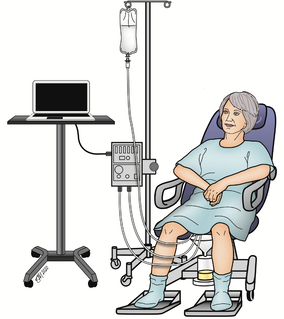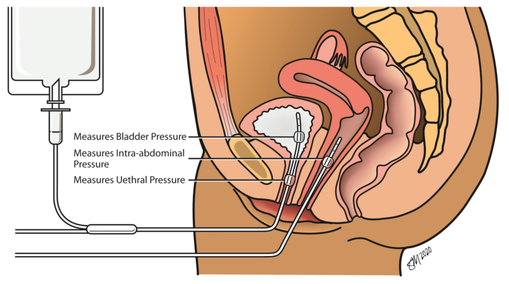Urodynamic Testing
|
Urodynamic testing includes several tests to evaluate the function of your bladder and urethra. Specifically, as urogynecologists, we are interested in how your bladder stores and empties urine.
Why Do We Perform Urodynamics?
Urinary incontinence, or urinary leakage, affects many women. Causes of urinary leakage vary widely, and urodynamics can help identify the type of incontinence that a woman is experiencing. Sometimes, we perform urodynamic testing on women who are planning to undergo surgery for prolapse but do not have any urinary leakage. We also perform urodynamic testing on patients who may have already undergone surgery for prolapse or incontinence but are experiencing bladder symptoms. These tests often will help direct you and your urogynecologist to the treatment or surgery that will best address your needs. How Is the Test Performed? On the day of the testing, you should come to the office with a comfortably full bladder. You do not need to be on a special diet or fast before the testing. Our nurse, who will be performing the test, will direct you to the procedure room where the testing will take place. The first part of the test measures the flow of your urine while you are emptying your bladder. Next, a small catheter is placed in your urethra and used to fill your bladder with sterile water. A similar small catheter will be placed in your vagina and rectum. The catheters measure the pressures in your urethra and bladder during filling and, later, during emptying. Throughout the test, you will be asked questions about how your bladder feels. We will also ask you to perform activities such as coughing, straining, changing your position, or jumping while your bladder is full. This may trigger your bladder symptoms, but don’t worry! Leakage in the procedure room is OK…even expected.
At the end of the test, you will be asked to empty your bladder with the small catheter in place. The information gathered by the study will inform your urogynecologist about how your bladder functions and which treatment will be best for you. Following the test, you will be given an antibiotic to ensure that you do not develop a urinary tract infection. The testing is not painful and will take approximately 30 minutes to complete. |
To Request an Appointment
If you're suffering from a pelvic floor disorder, you don't have to live with the symptoms. To learn about treatment options, call 312.694.7337 to schedule an appointment with one of our urogynecologists. |





